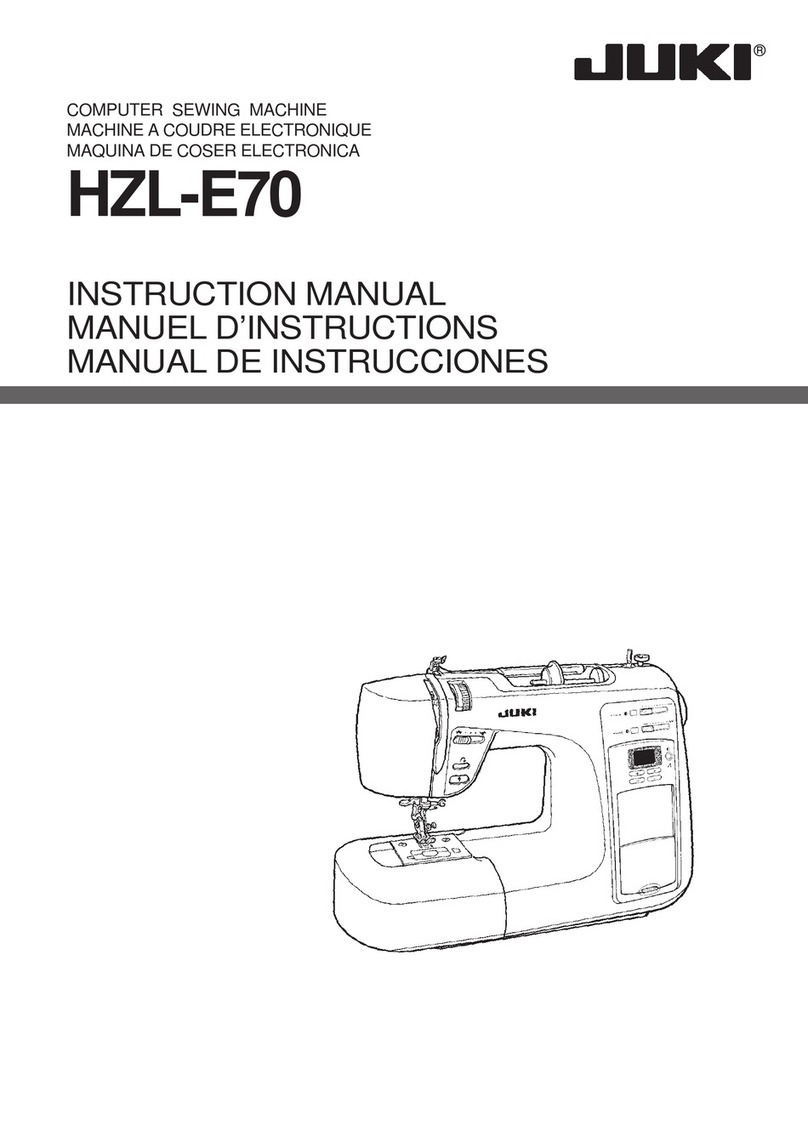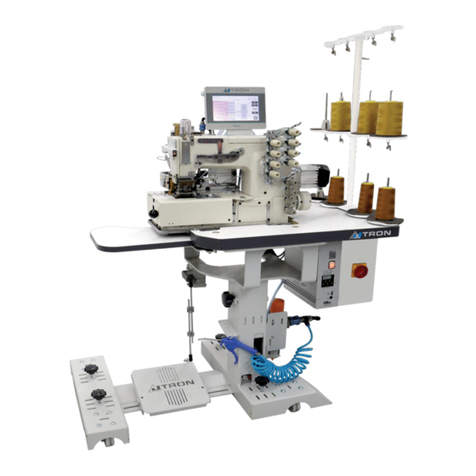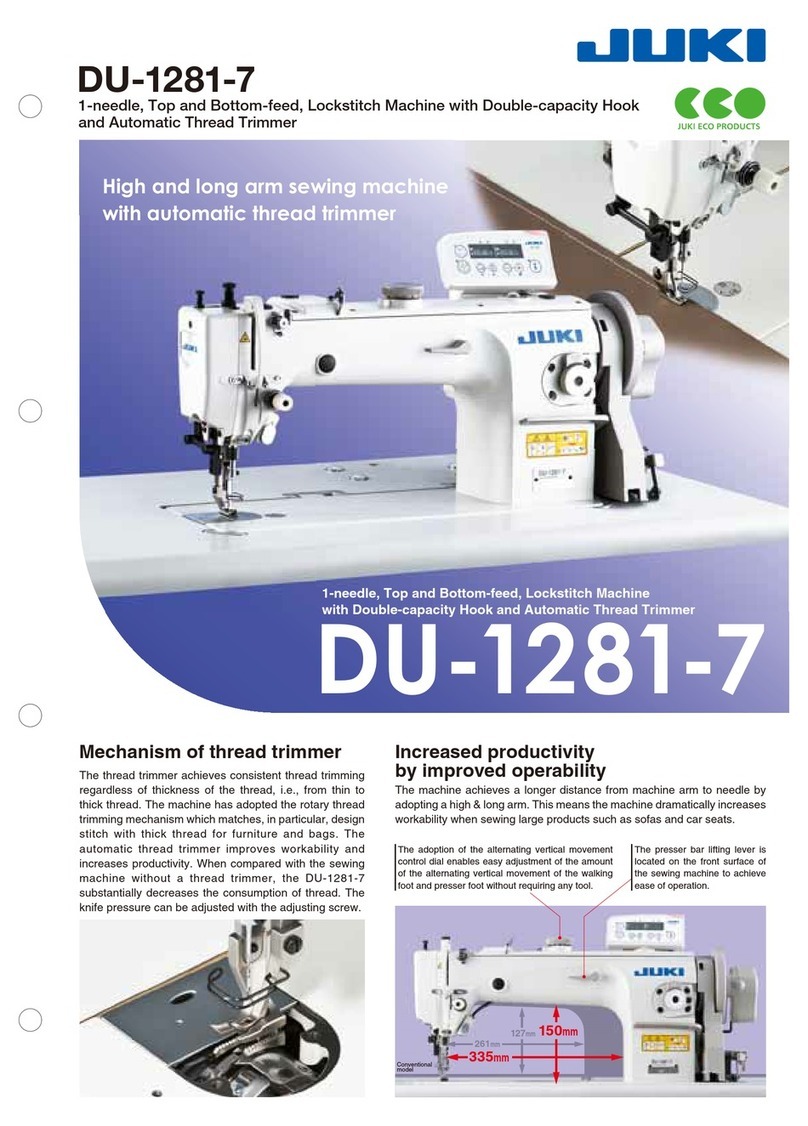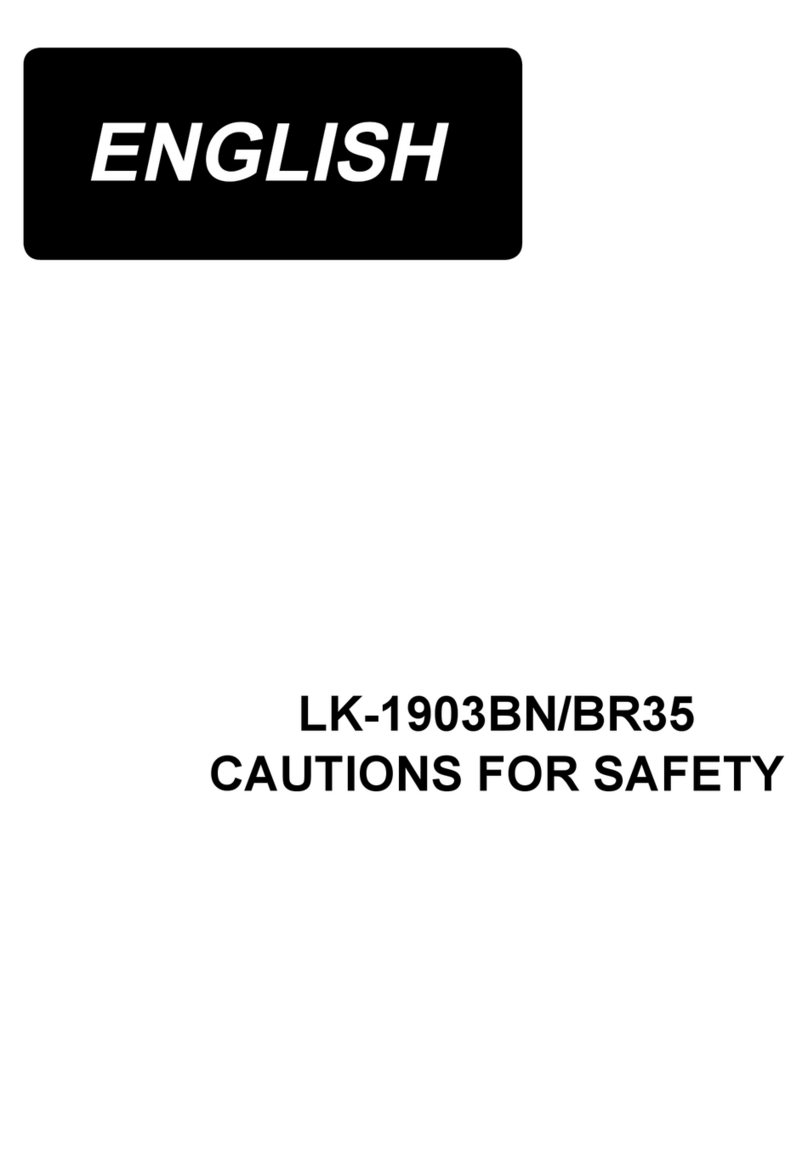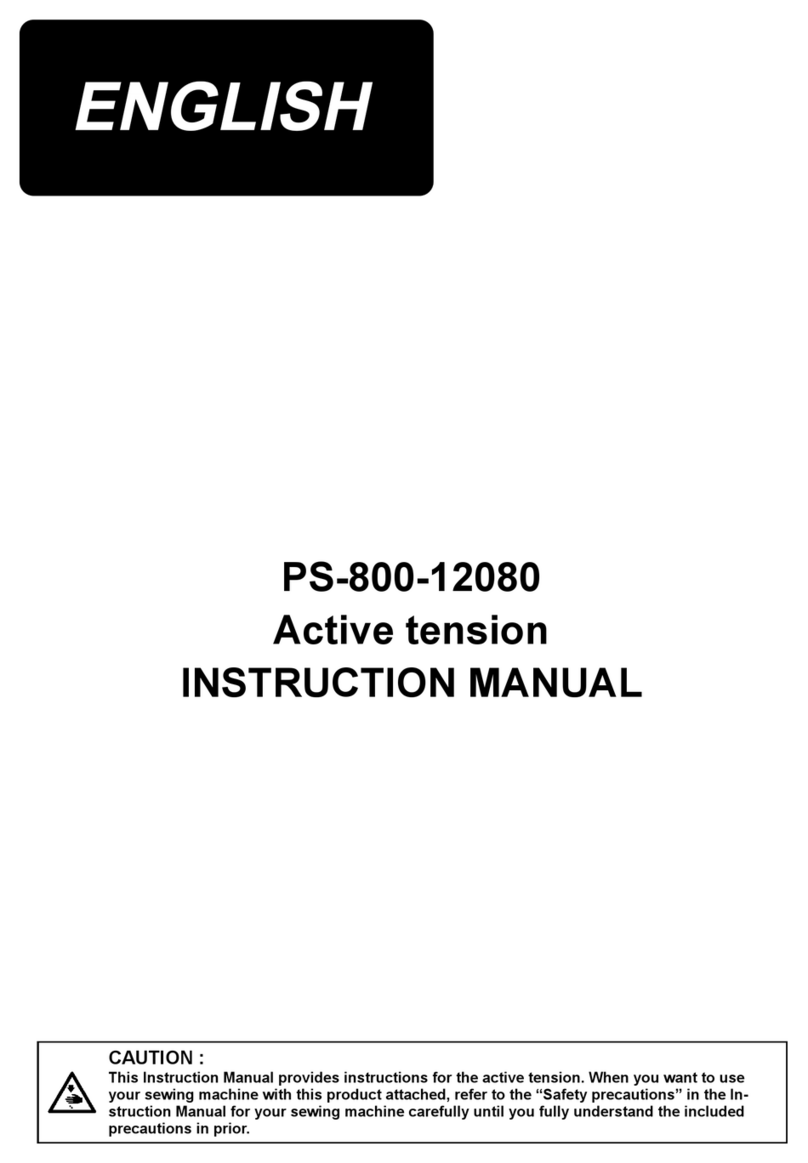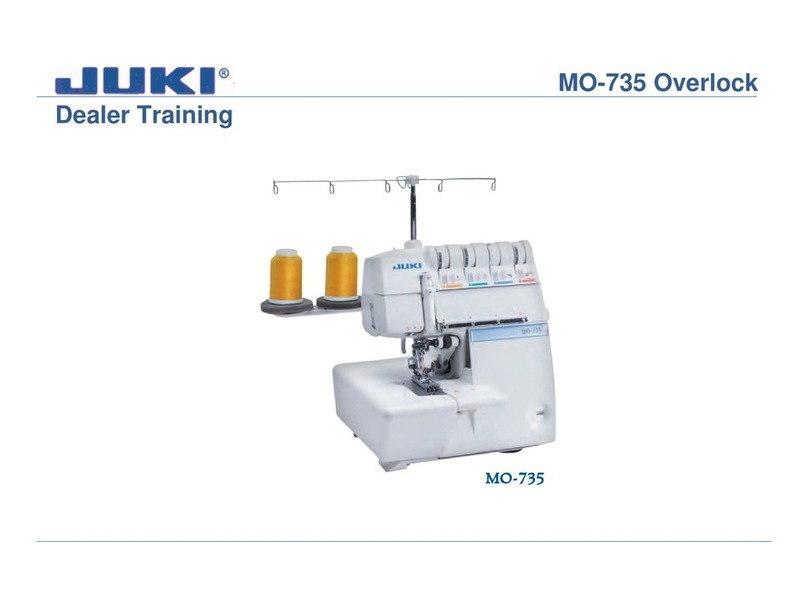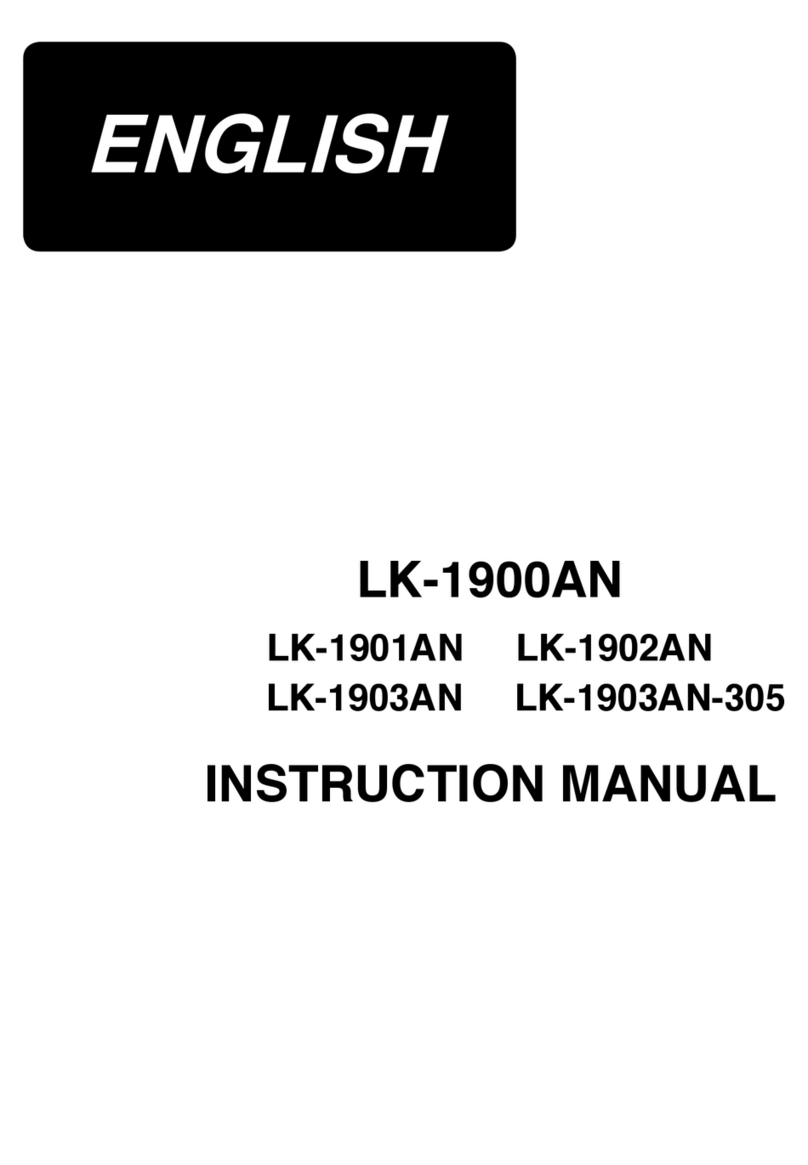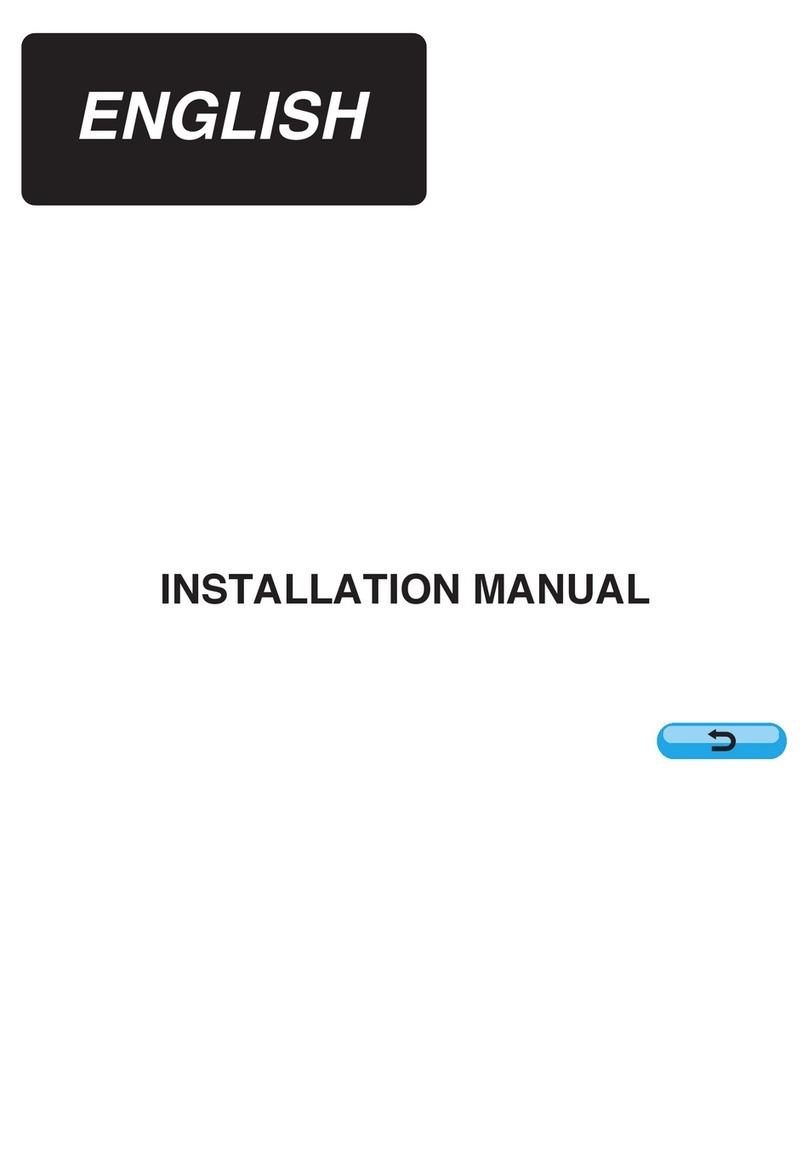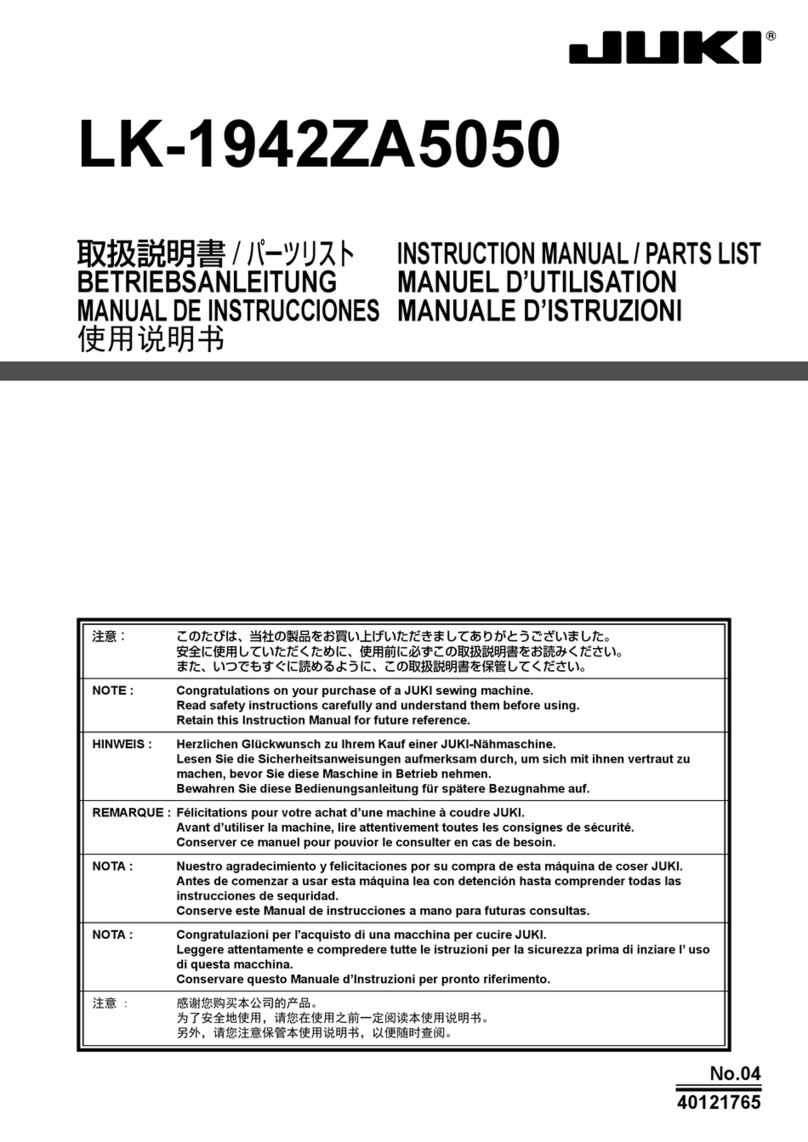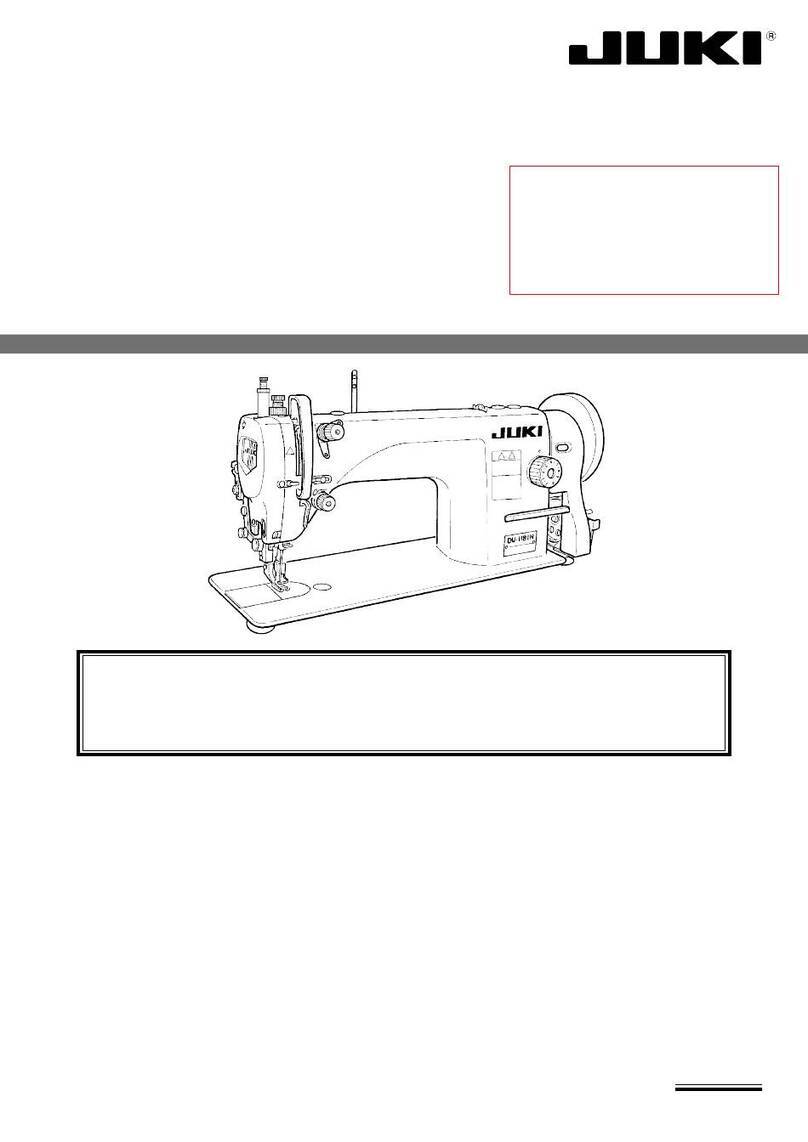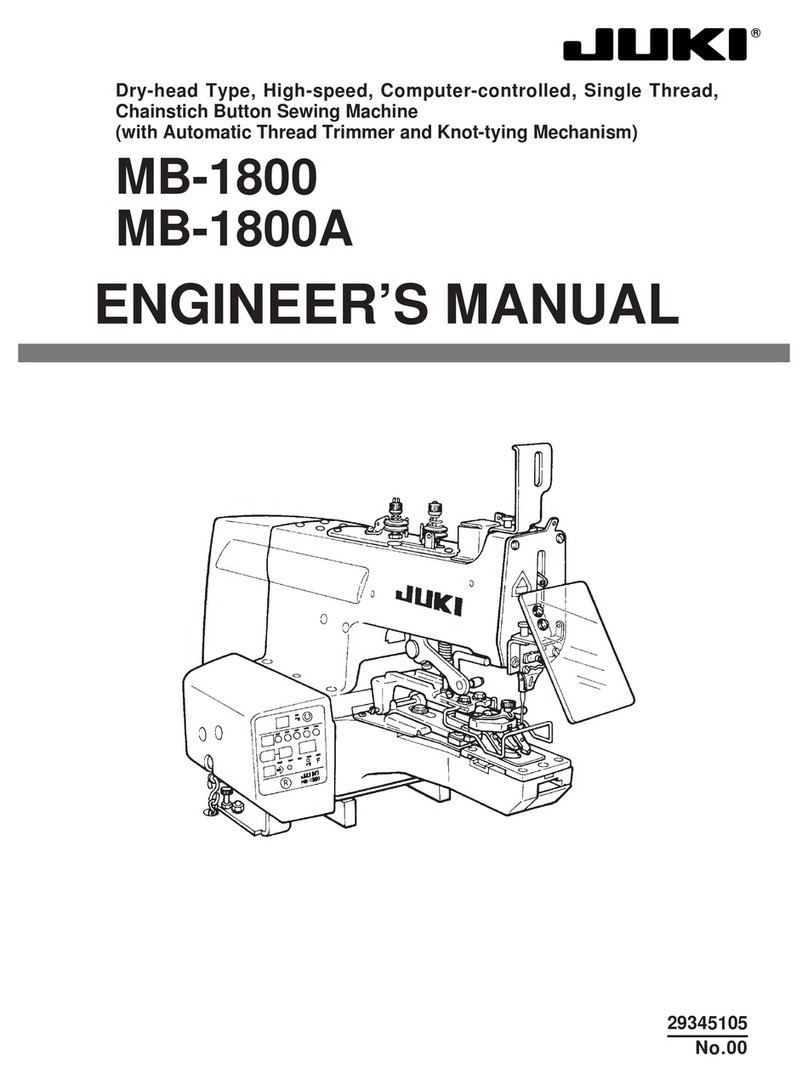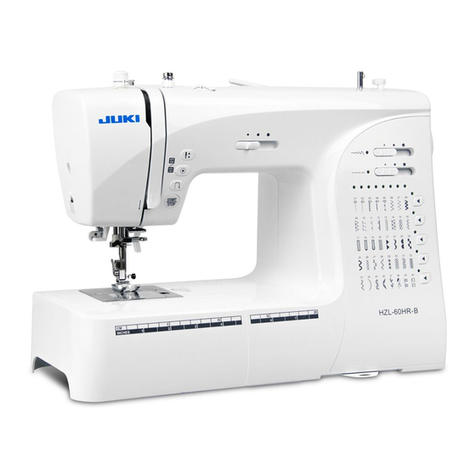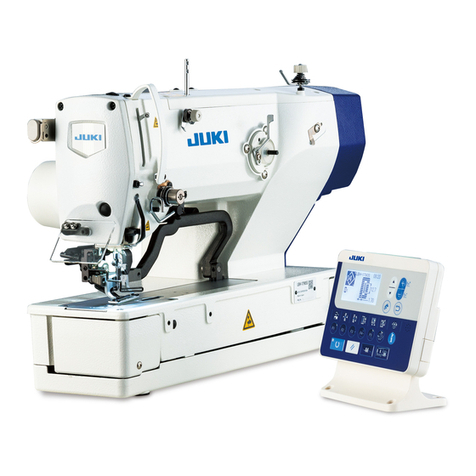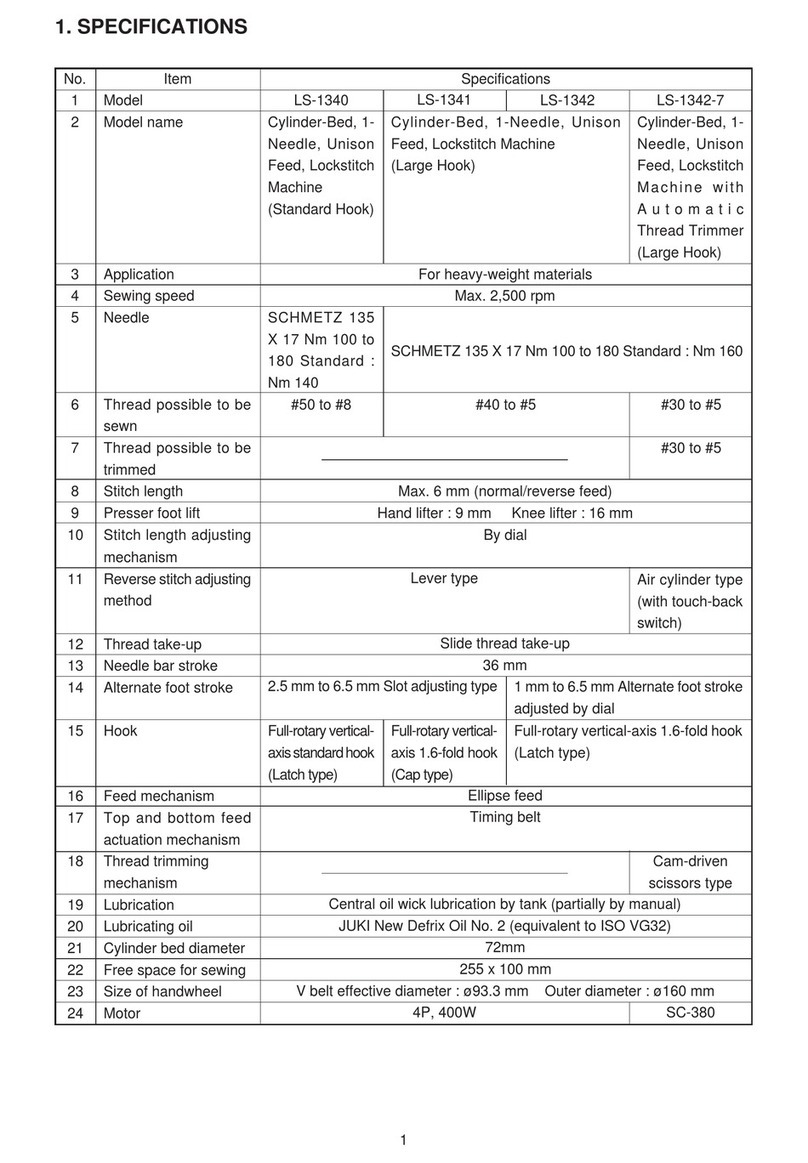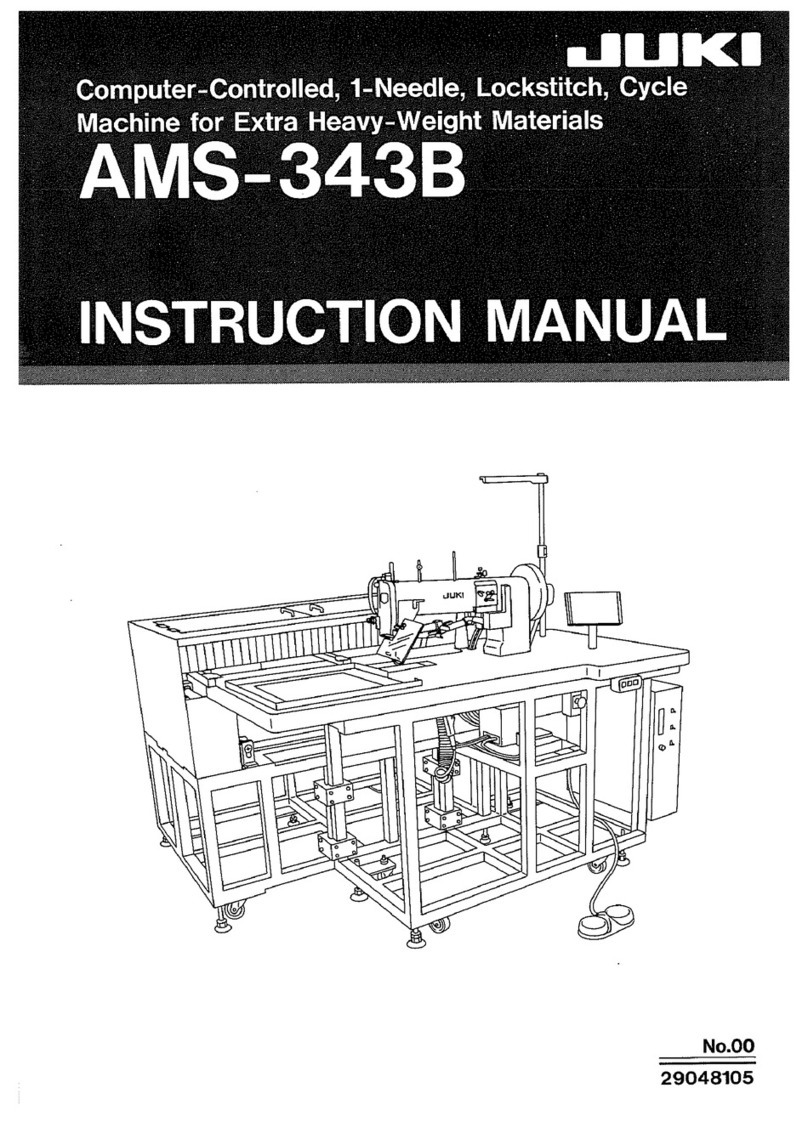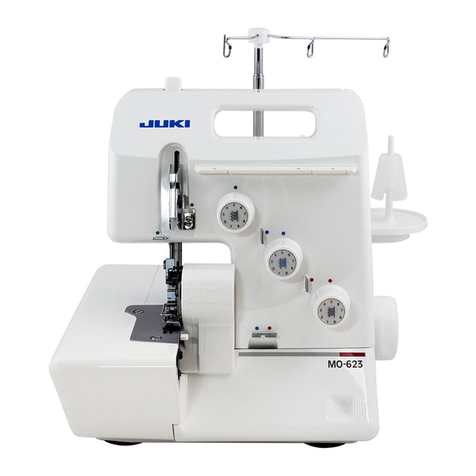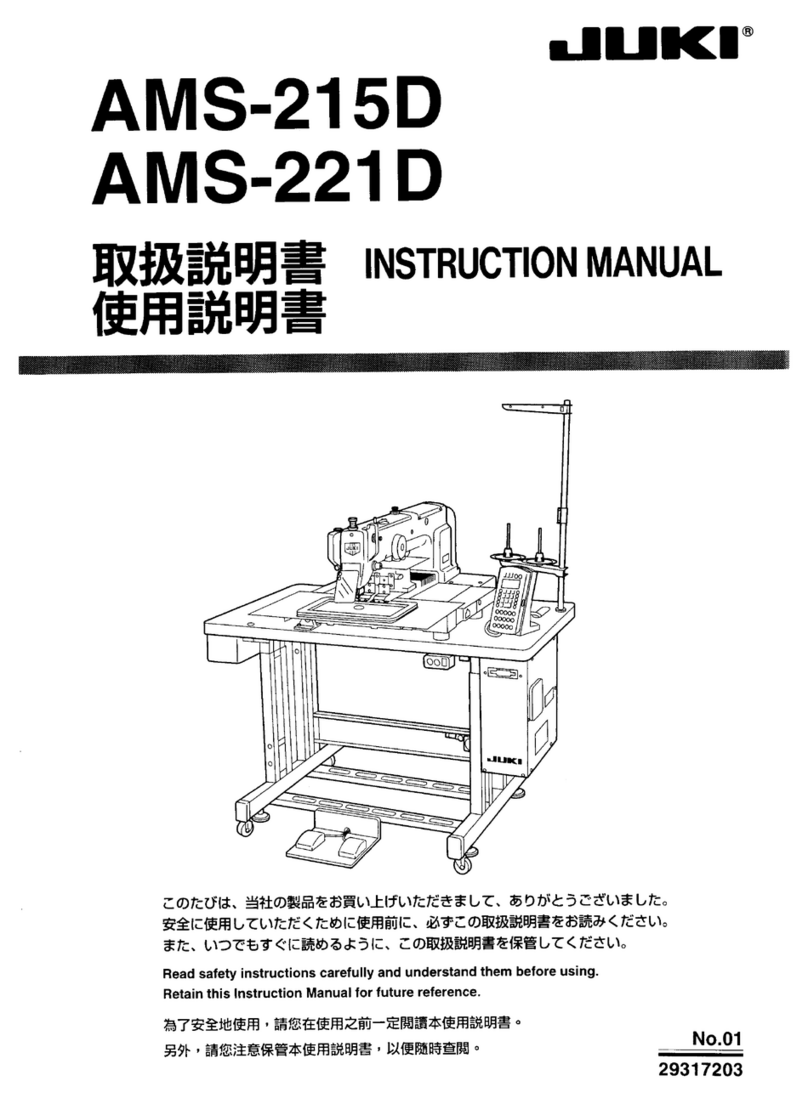
- 4 -
6. EXPLANATION OF THE CONTROL PANEL
1Pattern selector switch
• Used for selecting a pattern from among the
four different patterns.
2Double reverse stitching (for start) switch
• Used for turning ON/OFF the double reverse
stitching for start.
3Double reverse stitching (for end) switch
• Used for turning ON/OFF the double reverse
stitching for end.
4Automatic reverse stitching (for start) switch
• Used for turning ON/OFF the automatic
reverse stitching for start.
5Automatic reverse stitching (for end) switch
• Used for turning ON/OFF the automatic
reverse stitching for end.
6Switches for setting the number of stitches
• Used for setting the number of stitches to be
sewn in processes A through D.
7Material edge sensor ON/OFF switch
• Rendered effective when the material edge
sensor is installed on the machine.
• Used for setting whether or not the material
edge sensor is used during sewing.
8One-shot automatic stitching switch
• Rendered effective when the material edge
sensor is installed on the machine or when
the sewing machine is operated under the
constant-dimension stitching mode.
• Start the sewing machine with this switch, and
the sewing machine will run automatically until
the material edge is detected or the end of a
constant-dimension stitching is reached.
9Automatic thread trimming switch
• Rendered effective when the material edge
sensor is installed on the machine or when
the sewing machine is operated under the
constant-dimension stitching mode.
• Even keep depressing the front part of the
pedal, the sensor can detect the material
edge, or after the completion of the constant-
dimension stitching mode, the machine will
automatically perform thread trimming.
!0 Thread trimming prohibition switch
•
Used for prohibiting thread trimming at any occasion.
!1
Bobbin thread counter/thread trimming counter
• Bobbin thread counter/thread trimming counter
can be changed over by the function of the control
box main body.
Bobbin thread counter :
• Indicates the amount of bobbin thread while
counting it by subtracting from the set value.
• When the bobbin thread remaining amount
detecting device is installed on the machine, the
counter indicates the number of times of detecting.
Thread trimming counter :
• Every time thread trimming is performed, the
counter value is added.
!2 Bobbin counter reset switch
• Used for returning the value shown on the
bobbin thread counter to the initial value.
• When the thread trimming counter is selected,
it is reset to [0].
!3 Bobbin thread amount setting switch
• Used for setting the amount of bobbin thread.
!4
Needle up/down compensation switch
• Used for performing needle up/down
compensation stitching.
[Changeover selection of needle bar stop position
when the pedal is in its neutral position]
• Pressing the needle up/down compensation
switch, turn ON the power to the machine, and
the needle bar stop position when the pedal is
in its neutral position is changed over to down
position/up position.
• Conrmation of the stop position can be
performed at the front cover of the control box.
When up position stop is specied : " nP UP "
When down stop position is specied : " nP Lo "
!5 Information switch
• Used for calling the production support
function and calling the one-touch setting
(by keeping the switch held pressed for one
second.)
!4 2 4 8 !1
3 5 9!5
61
!3
7!2
!0
